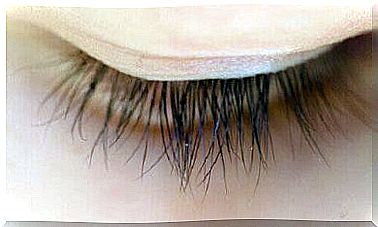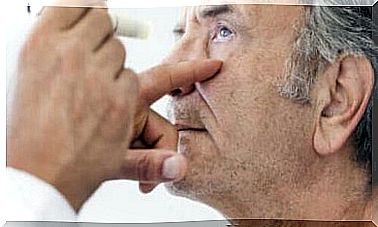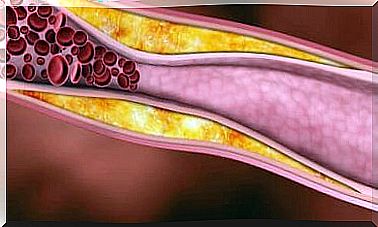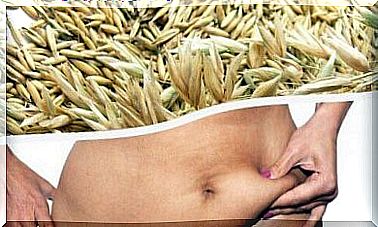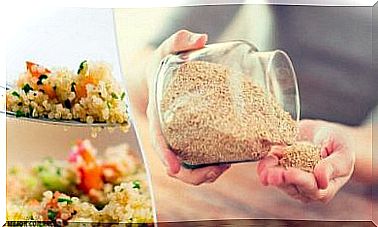5 Changes To The Forties Diet

Are you turning 40 and worried about whether you need to make significant changes in your life? In this article, we present five effective changes to your forties diet!
Age should not be an obstacle or motive for taking care of your body. That is why you should always take care of yourself. However, there are a few changes you should make to your diet after you turn 40.
After the age of 40, not only is it harder to lose weight, but certain health problems can begin and you need to manage them.
1. Increase your calcium intake
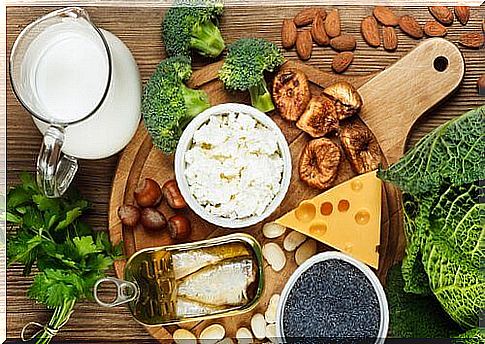
Estrogen production decreases after 40 years and makes it harder for bone to absorb calcium from food.
It increases the risk of suffering from osteoporosis and fractures, which may have consequences in the future.
It would be ideal to consume about 1,000 mg of calcium a day.
Here are some options for including it in your diet:
- Cheese containing 470 to 850 mg of calcium per 100 grams (depending on the type of cheese). However, keep in mind that cheese is high in fat, meaning it should not be eaten in large quantities.
- Almonds with 250 mg of calcium per 100 grams. It is important not to consume too many almonds as they are high in carbohydrates and fats.
- Yogurt. 100 grams of yogurt contains 127-180 mg of calcium. When choosing yogurt, favor natural alternatives with as few sweeteners as possible. Another good option is to make yogurt at home.
2. Eat more protein
When you reach the age of 40, you also need to increase your protein intake, as our muscle mass decreases as we get older. That means you can lose weight you don’t want and thus leave room for extra fat to build up.
It would be a good idea to include about 30 g of protein in each meal.
The best options are:
- Soya containing 37 g of protein per 100 g. The best choice is to eat the bean itself, but if you don’t like it or can’t find it in the store, try tofu or soy milk.
- Pine nuts with 14 g of protein per 100 grams. However, avoid eating large amounts at a time as they are high in fat.
- Chicken. 100 grams of skinless and lean chicken contains 30 g of protein. The best way to eat it is to add vegetables and as little fat as possible to your meal.
3. Reduce sodium consumption

Inflammation and swelling are common problems when you reach the age of 40 as well as during menopause. To reduce how often and how severely it happens, you should limit your sodium intake.
The easiest way is to reduce the amount of salt you consume. If you have already reduced your use of salt in cooking and inflammation is still a problem, check the labels on the products you are used to eating.
Most foods contain sodium as an ingredient, so you should look for healthier alternatives or reduce the portions you eat.
Pay special attention to nutrient labeling. Thus, you can see the amount of sodium that the product contains per serving as well as the weight of the serving.
4. Add more antioxidants to your diet
You’ve probably already heard a lot about the benefits of antioxidants in your body.
When you reach the age of 40, you will begin to experience age-related problems such as skin problems and snap joints.
To reduce the problem, try to include in your diet:
- Peppers
- Blackberries
- Broccoli
- Strawberries
- Green tea
- Dark chocolate
5. Take care of your vitamin B12 intake

When you reach the age of 40, your body begins to suffer from problems with the nervous system and the production of blood cells. These two situations are contrary to adequate intake of vitamin B12.
- An adult needs about 2.4 micrograms of vitamin B12 a day and can get it from dairy products, fish and eggs.
Other changes you should make when you turn 40 years old
In addition to proposing the above five changes to your forties diet, it is important to improve your lifestyle to ensure that your dietary effort is paying off.
The main changes are:
- Make changes to your exercise plan to adapt to the characteristics of your body. If you notice joint problems, choose calmer exercises.
- Take a health check every six months. If you’ve always been in good health, you may not have had to see a doctor as often. When you reach the age of 40, it is important to see a doctor more often in order to rule out the appearance of diseases.
- Move often. Move as much as you can. Just walking or stretching will help!
Are these habits already a part of your life or do you need to embrace some of them as new?
